In this article:
Vaginal yeast infections are common problems that affect many women at least once in their lifetime. It usually occurs due to an imbalance of hormones, taking a course of antibiotics, or some medical conditions such as diabetes.
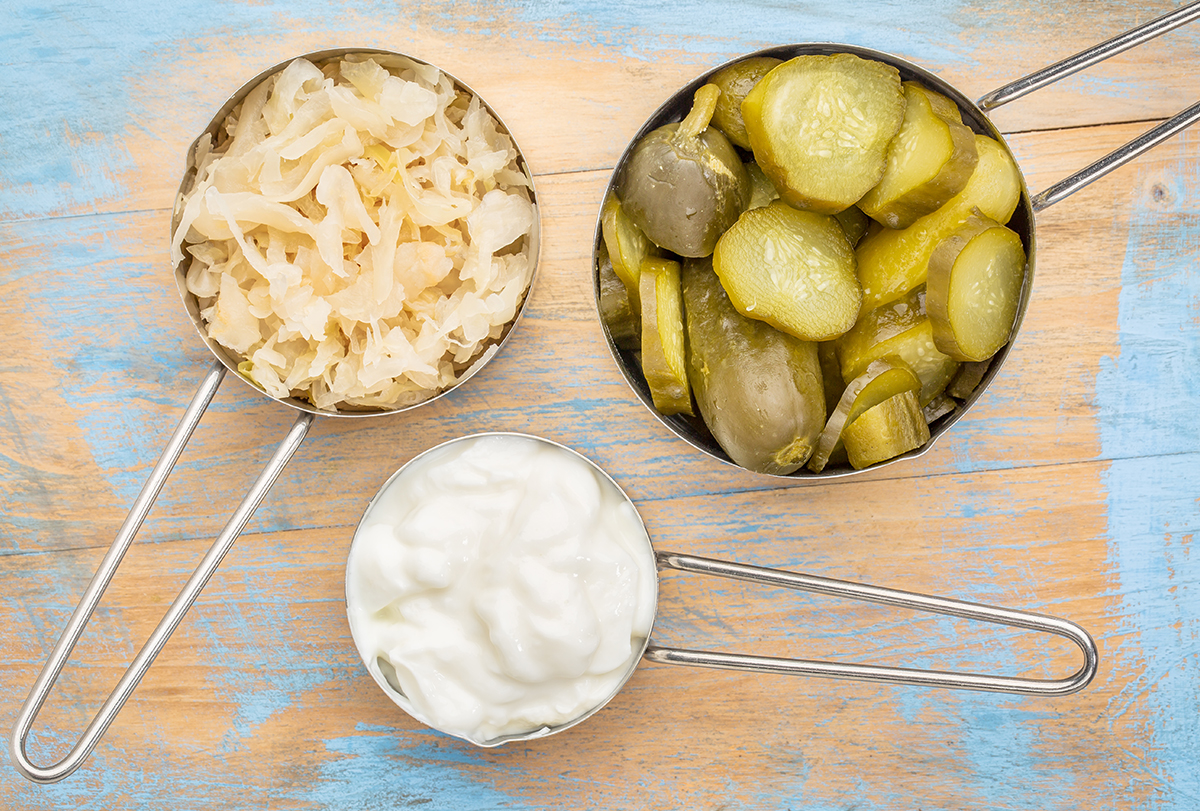
Most yeast infections are caused by the genera Candida and Monilia. These fungi are part of the natural flora of the body and are kept at normal levels by the immune system. However, an overgrowth of this fungus due to many reasons can lead to a yeast infection. (1)
Fortunately, most cases of yeast infections are mild and are easily treated with antifungal medications. You can also try a few simple natural remedies to alleviate the constant itching and discomfort caused by them.
Home Remedies for Yeast Infections
Here are a few common and effective home remedies for yeast infections.
1. Use boric acid
Boric acid has well-documented antifungal and anti-inflammatory properties. It has been used to treat vaginal infections for ages.
A 2011 study helped confirm the role of boric acid in effectively treating fungal vulvovaginitis. (2)
Boric acid oral capsules are available over the counter in many places. The CDC recommends taking a 600-mg capsule twice a day for 15 days. You can also dilute a tablet of boric acid in some water and apply it to the outside of the vulva for relief.
Note: Do not use boric acid to treat vaginal infections during pregnancy.
2. Use calendula
Calendula is an herb with potent antibiotic and antifungal properties. It has recently been proven to be very effective in treating oral and vaginal thrush.
Calendula is available in the form of OTC calendula creams, ointments, tinctures, etc.
You can also use fresh calendula leaves to make a salve if you have access to them. Simply crush or grind a few calendula leaves and apply them topically to the affected area. (3)
3. Consider tea tree oil
Tea tree oil is another all-natural treatment for yeast infections that has antifungal and anti-inflammatory qualities.
Tea tree oil has recently been proven to be highly effective in treating vaginal candidiasis when used along with fluconazole (an antifungal medication). It helps cure the infection faster and provides quick relief from its symptoms.
You can soak in a bathtub filled with water and a few drops of tea tree oil and coconut oil for 10 minutes. Alternatively, you can apply 7–10 drops of tea tree oil and 10 drops of coconut oil to a warm towel and dab it on the affected area for a few minutes.
Note: Do not use tea tree oil if you feel a burning sensation in the area. (4)
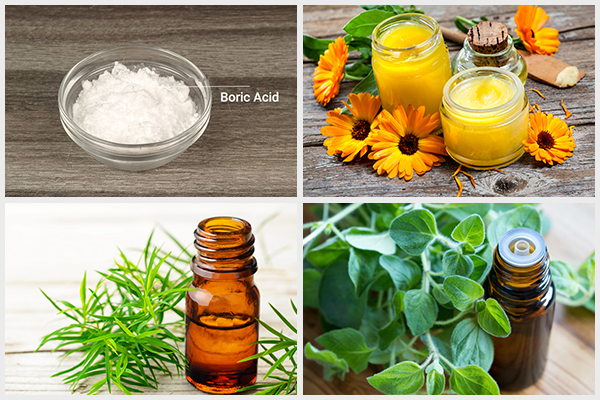
4. Apply oil of oregano
Oregano oil is another useful essential oil that can help treat fungal infections. It has a potent fungicide action that can inhibit the growth of Candida albicans, the fungus responsible for most yeast infections.
Add 3–4 drops of oregano oil to a teaspoon of coconut oil, and apply this mixture to the affected area for relief. (5)
5. Consume probiotics
Probiotics contain beneficial bacteria naturally found in the body. They can help fight infections by increasing the population of “good bacteria” in the body.
The most common bacterial strain found in oral probiotics is Lactobacillus acidophilus, which is also present in the vaginal flora. Thus, taking probiotics can help decrease the growth of fungi.
Increase your consumption of natural probiotics such as yogurt in your diet. You can also apply unsweetened yogurt directly to the external area of your vagina. (6)(7)
6. Consume cranberries
Some recent studies claim that cranberries can help treat yeast infections. (8) Cranberries can be consumed directly or in the form of juices, oral capsules, teas, etc.
You may need to consume them every day for a couple of weeks before you start seeing results.
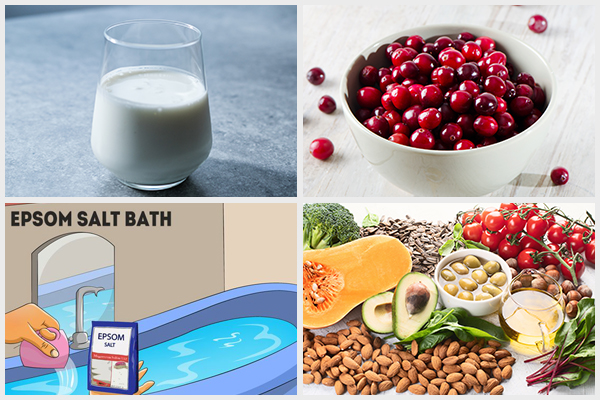
7. Take an Epsom salt bath
Epsom salt contains magnesium sulfate, which can help soothe the skin and decrease the itching and pain associated with yeast infections by its antimicrobial activity. (9)(10)
Fill a bathtub with warm water and add a tablespoon of Epsom salt to it. Soak in this bath for 10–15 minutes to see results. Wipe immediately after coming out of the bathtub.
8. Use vitamin E suppositories
Vitamin E has effective anti-inflammatory and antioxidant properties that can help fight skin and vaginal yeast infections and reduce inflammation.
A recent study claims that using vitamin E suppositories can help treat most of the symptoms of candidiasis in women. (11)
9. Try lemongrass
Lemongrass oil is another essential oil that has been proven to be effective against many different species of fungal pathogens. (12)
You can apply a few drops of lemongrass oil and coconut oil topically on the vulvar region and any other external skin affected by candidiasis for relief.
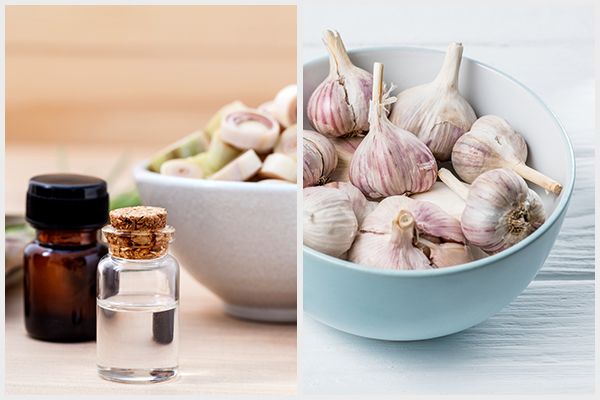
10. Try using garlic
Garlic has well-known antimicrobial and anti-inflammatory properties. It can be helpful against a wide range of bacterial, viral, and fungal infections. (13)
As mentioned in a research study, 110 women with itching or a burning sensation in the vaginal area observed an improvement in their symptoms after taking 1,500 mg of Garcin tablets and 150 mg of fluconazole tablets daily for 7 days. (13)
You can also add more garlic to your diet to help your body fight the infection.
Note: Do not apply garlic directly to the vaginal area as this can cause burning and irritation.
Other Treatment Options
Some over-the-counter and prescription (OTC) medicines can also be tried if the above remedies do not seem to improve your condition:
- OTC medications: Many OTC medications for fungal infections are available everywhere. Most of them contain tioconazole and need to be used for 3–7 days for effect.
- Prescription lotions: Some people may not experience any relief even after using the above remedies. You can consult a doctor for a prescription lotion or oral medication. Some common prescription lotions are terconazole and butoconazole. Commonly used oral medications are fluconazole and clotrimazole. (14)
Causes of Yeast Infection
Common causes of yeast infections include:
- Excess sweating or humidity in the skin folds (armpits, vaginal area, etc.)
- Diabetes
- Obesity
- Antibiotic or steroid therapy
- Certain immune disorders such as AIDS
- Chemotherapy
- Improper hygiene
- Pregnancy (15)
Symptoms of a Yeast Infection
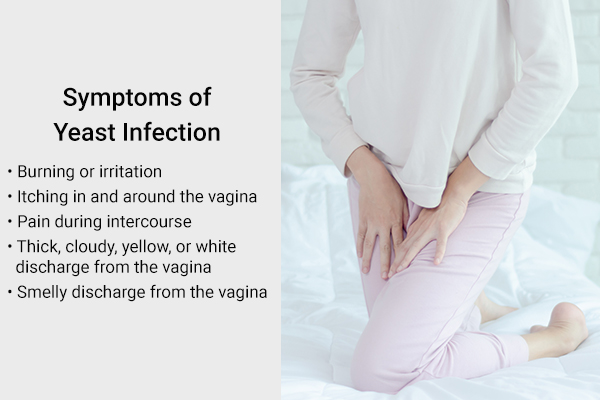
Symptoms of vaginal yeast infections are:
- Burning or irritation
- Itching in and around the vagina
- Pain during intercourse
- Thick, cloudy, yellow, or white discharge from the vagina
- Smelly discharge from the vagina (16)
Diagnosis of Yeast Infections
Healthcare providers usually diagnose vaginal candidiasis by taking a small sample of vaginal discharge. They examine the sample under a microscope in the medical office or send it to a laboratory for a fungal culture.
However, a positive fungal culture does not always mean that Candida is causing symptoms. Some women can have Candida in the vagina without having any symptoms. (16)
Preventing Yeast Infections
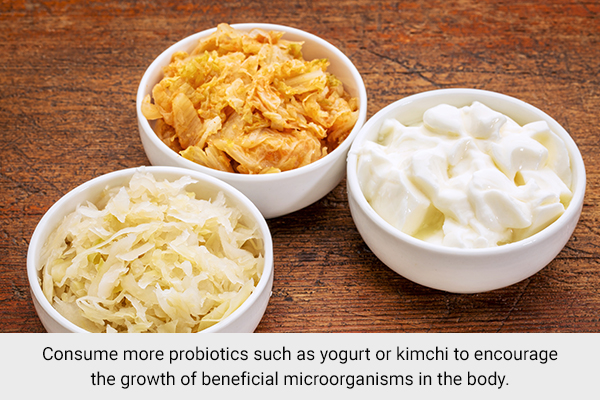
If you have recurrent yeast infections, your lifestyle may be to blame. Here are some effective ways to prevent yeast infections:
- Wear light cotton underwear that lets your private parts breathe easily.
- Do not sit in damp clothes after a workout, swim, etc.
- Consume more probiotics such as yogurt or kimchi to encourage the growth of beneficial microorganisms in the body.
- If you are on broad-spectrum antibiotic medication, inform your doctor about your recurrent vaginitis and how to reduce it.
When to See a Doctor
If you have any of the symptoms listed above, it is best to consult a doctor for a proper diagnosis. You may be suffering from a sexually transmitted infection (STI) or a yeast infection.
Either way, the doctor will prescribe some medicine to treat you.
Final Word
Yeast infections can be a pain in the ass – quite literally. If you are experiencing any of the symptoms of a vaginal infection, consult a doctor immediately and start medical treatment for quick results.
At the same time, you can try the home remedies given above to help facilitate speedy healing and prevent recurrence.
- Was this article helpful?
- YES, THANKS!NOT REALLY


